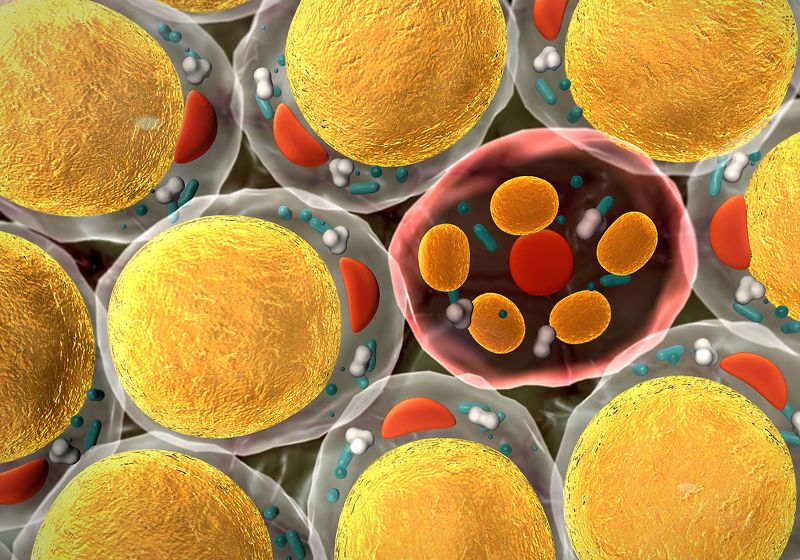Ancient Dental Plaque Unearths Prehistoric People’s Lifestyle

Dental calculus preserves DNA over millennia, providing unprecedented information about the biodiversity and evolution of the human microbiome.
Millennia ago, when ancient people did not know what toothbrushes were, food particles and microbes clung stubbornly to their teeth. These plaques mineralized over time to form crusty, hard tartar.
Christina Warinner is a biomolecular archeologist at Harvard University and Max Planck Institute for Evolutionary Anthropology.
Christina Warinner
Centuries later, scientists discovered that this calcified tartar was a goldmine of preserved ancient DNA.1 “It is like time travel in many ways,” said Christina Warinnera biomolecular archeologist at Harvard University and the Max Planck Institute for Evolutionary Anthropology.
Over the last few years, Warinner and her team isolated DNA from the tartar of excavated human remains and dug up a lost microbial world. Reconstructing ancient oral microbiomes revealed patterns of microbial diversity and identified bacterial enzymes produced thousands of years ago, offering a glimpse into prehistoric people’s health and lives.
Tartar is a Treasure Trove of Ancient DNA
Warinner, who was interested in both microbiology and archeology, wanted to explore whether ancient DNA could provide insights about the history of human diseases. To this end, she worked with skeletal teeth, which would often be covered with tartar that she would get rid of with a dental scalar. “Sometimes, we joke about being dentists to the dead,” said Warinner.
Warinner extracts DNA from ancient teeth samples to understand the lives of prehistoric humans.
Werner Siemens Foundation, Felix Wey
When researchers found that tartar on ancient teeth preserved ancient DNA, Warinner realized that this was actually the oral microbiome fossilized in time.2 “(It) was actually like a lightbulb going off for me,” said Warinner. “This was a way to actually open up all of human history to microbial studies.”
So, she painstakingly isolated DNA from the hardened dental calculus, or tartar, using methods employed to extract genetic material from ancient samples. Such samples usually yield low concentrations and poor quality of DNA, so when all of Warinner’s experiments failed, she blamed it on that. To her surprise, when she quantified the DNA obtained, the machine showed an error message, saying the DNA was too high: Most remains carried grams of tartar that contained a good amount of fossilized genetic material, so she ended up loading too much DNA which led to the failed experiments. “And that was eye-opening to me,” recalled Warinner. “Because what I realized is I had discovered the single richest source of ancient DNA known in the entire archeological record on this very humble crud stuck to the surface of teeth, that generations of people had just been throwing away.”
A Time Capsule that Revealed Prehistoric Human Health and Habits
Over time and through trial and error, Warinner and her colleagues figured out the best way to extract the short fragments of DNA from ancient dental tartars. Finding an accessible source of ancient DNA “really (was) like we discovered a time machine,” said Warinner. The next step was to use it to uncover history.
When they sequenced the genetic material isolated from ancient tartar, they found it teeming with bacterial DNA.1 The researchers identified several pathogenic bacteria and some antibiotic resistance genes, suggesting that the potential for antibiotic resistance was present in prehistoric times.
Warinner and her colleagues found ancient DNA evidence of infectious disease at the 16th century Mixtec site of Teposcolula Yucundaa in southern Mexico.
Christina Warinner
Reconstructing the medieval oral flora revealed the dietary habits of the people it once inhabited: The researchers found evidence of a mixed diet of plants and animals and also identified genes encoding enzymes required to digest milk.3 They studied milk proteins in the dental calculus, which helped them uncover the origins of dairying practices in Eastern Asia.4,5
Ancient oral microbiomes also helped Warinner and her colleagues solve a centuries-old mystery.6 They analyzed the tartar from remains excavated in the Mexican highlands—of victims of an epidemic in the 1500s—and detected DNA fragments of Salmonella entericapinpointing the pathogenic bacterium as a potential culprit of the epidemic.
Beyond health and disease, studying ancient tartar has helped Warinner and her team understand ancestral behavior. They found particles of a pigment, used for writing manuscripts, fossilized in the dental plaque of a woman from the 11th or 12th century.7 This was clear evidence that medieval women were involved in writing manuscripts, challenging the assumptions that male monks were the only ones to produce books throughout that period.
In addition to spilling ancient secrets, comparing the oral microbiome of human ancestors with that of their modern-day counterparts revealed that some microbes stood the test of time: Several bacteria such as those belonging to the genera Streptococcus and Actinomyces coexisted with humans through their evolution, offering insights into microbial health and disease through the ages.8 With advances in next-generation sequencing methods, Warinner hopes to answer many more questions, including how microbes evolved throughout human history.
Looking back, Warinner believes that she uncovered a window into the past in the most unusual source. “So many people have no idea just how valuable their dental plaque is, (and) how much information it has about…your life. It’s really incredible,” said Warinner. “So, I always encourage people, the next time (you) go to the dentist, just think about that while you’re there.”



